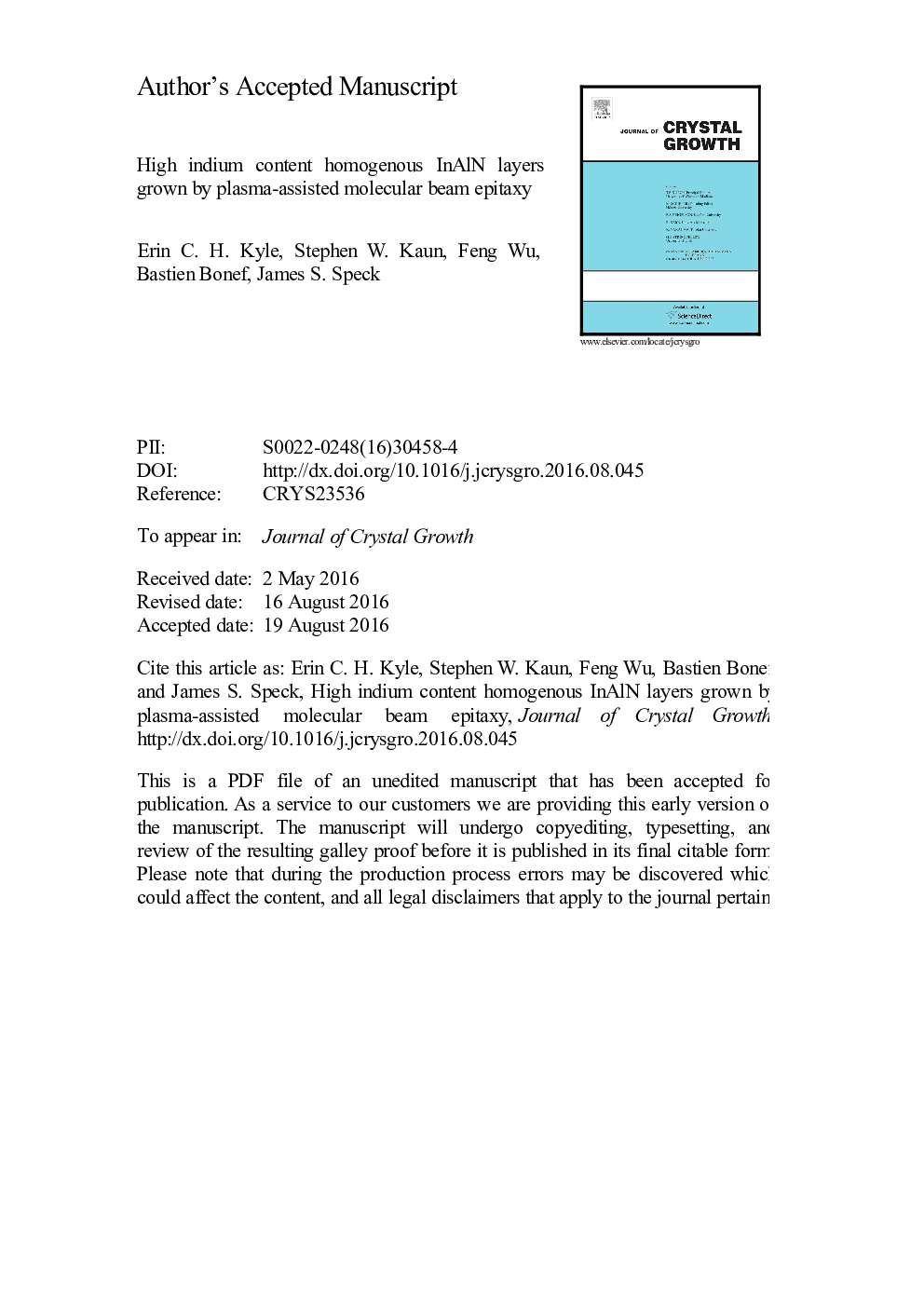| Article ID | Journal | Published Year | Pages | File Type |
|---|---|---|---|---|
| 8149224 | Journal of Crystal Growth | 2016 | 26 Pages |
Abstract
InAlN grown by plasma-assisted molecular beam epitaxy often contains a honeycomb microstructure. The honeycomb microstructure consists of 5-10 nm diameter aluminum-rich regions which are surrounded by indium-rich regions. Layers without this microstructure were previously developed for nominally lattice-matched InAlN and have been developed here for higher indium content InAlN. In this study, InAlN was grown in a nitrogen-rich environment with high indium to aluminum flux ratios at low growth temperatures. Samples were characterized by high-resolution x-ray diffraction, atomic force microscopy, high-angle annular dark-field scanning transmission electron microscopy, and atom probe tomography. Atomic force microscopy showed InAlN layers grown at temperatures below 450 °C under nitrogen-rich conditions were free of droplets. InAlN films with indium contents up to 81% were grown at temperatures between 410 and 440 °C. High-angle annular dark-field scanning transmission electron microscopy and atom probe tomography showed no evidence of honeycomb microstructure for samples with indium contents of 34% and 62%. These layers are homogeneous and follow a random alloy distribution. A growth diagram for InAlN of all indium contents is reported.
Keywords
Related Topics
Physical Sciences and Engineering
Physics and Astronomy
Condensed Matter Physics
Authors
Erin C.H. Kyle, Stephen W. Kaun, Feng Wu, Bastien Bonef, James S. Speck,
